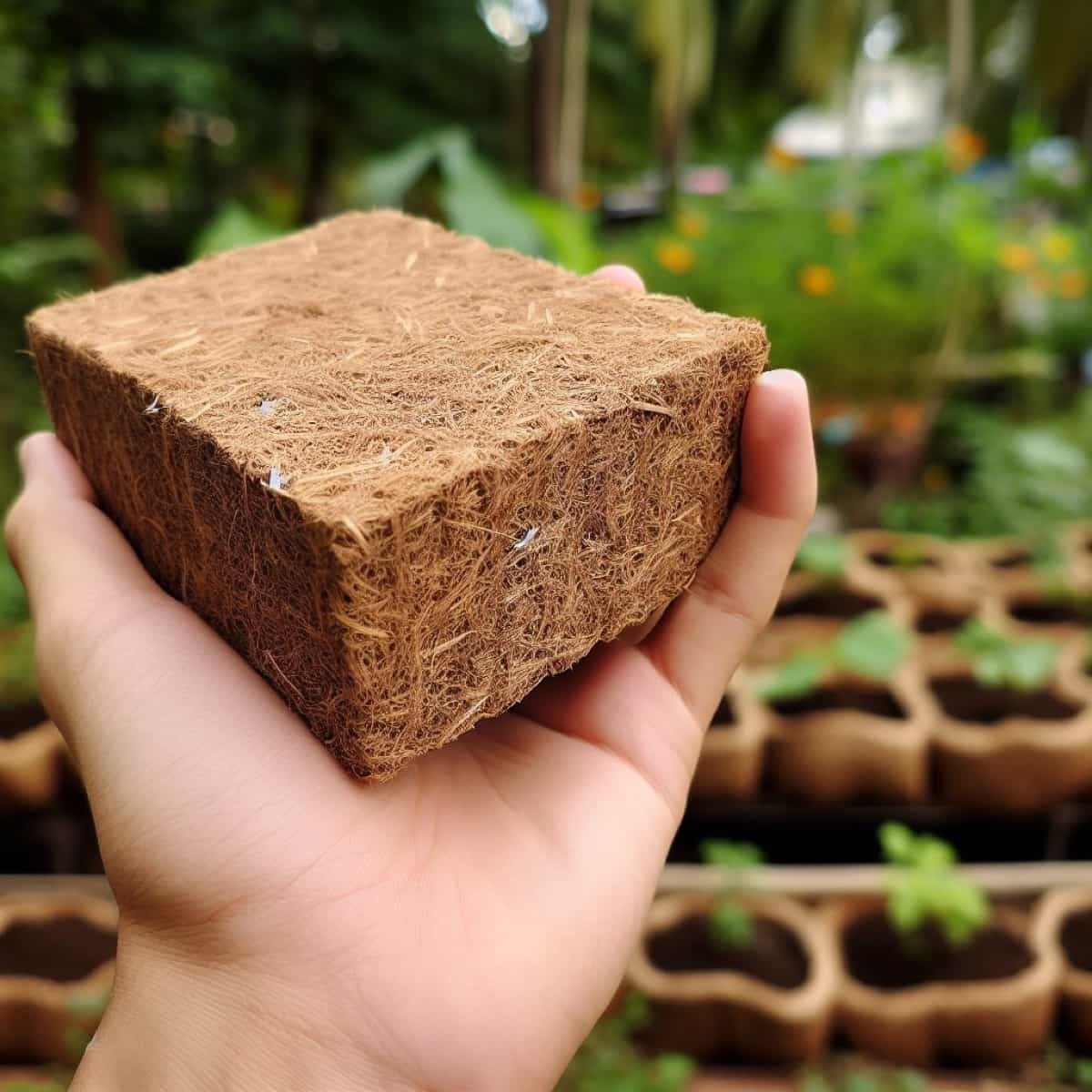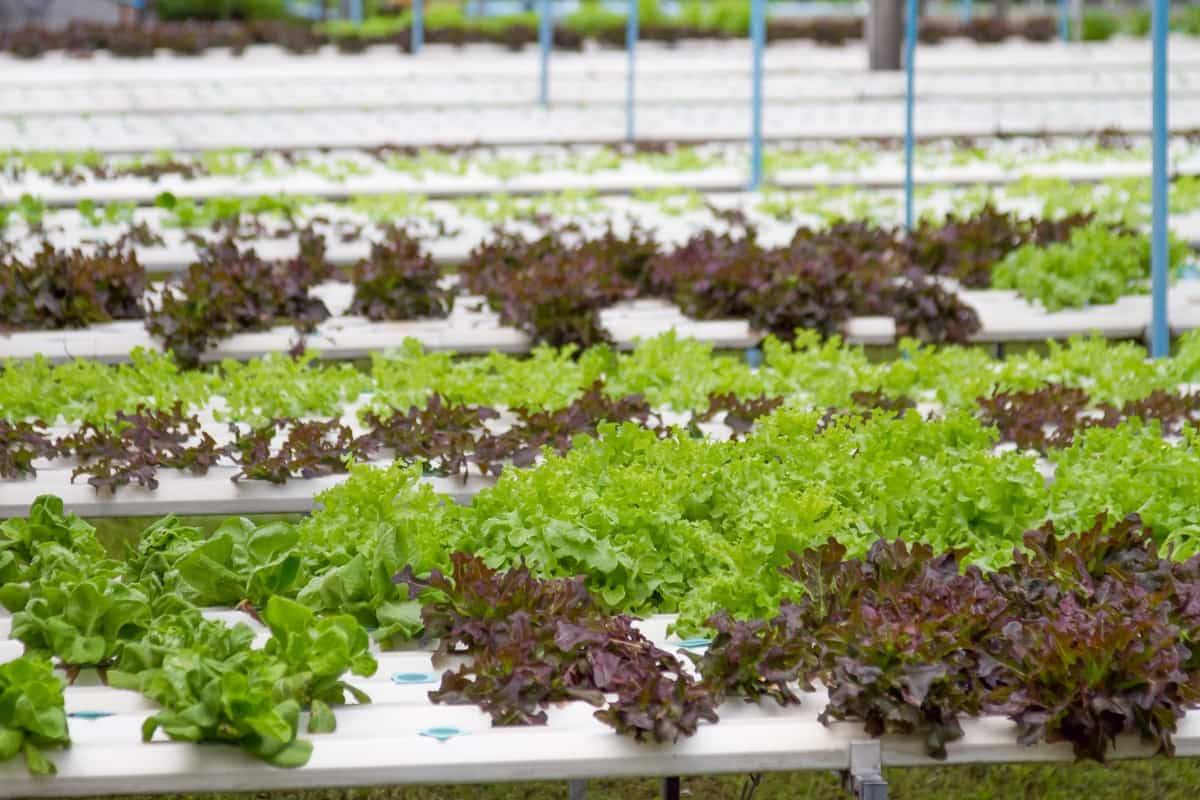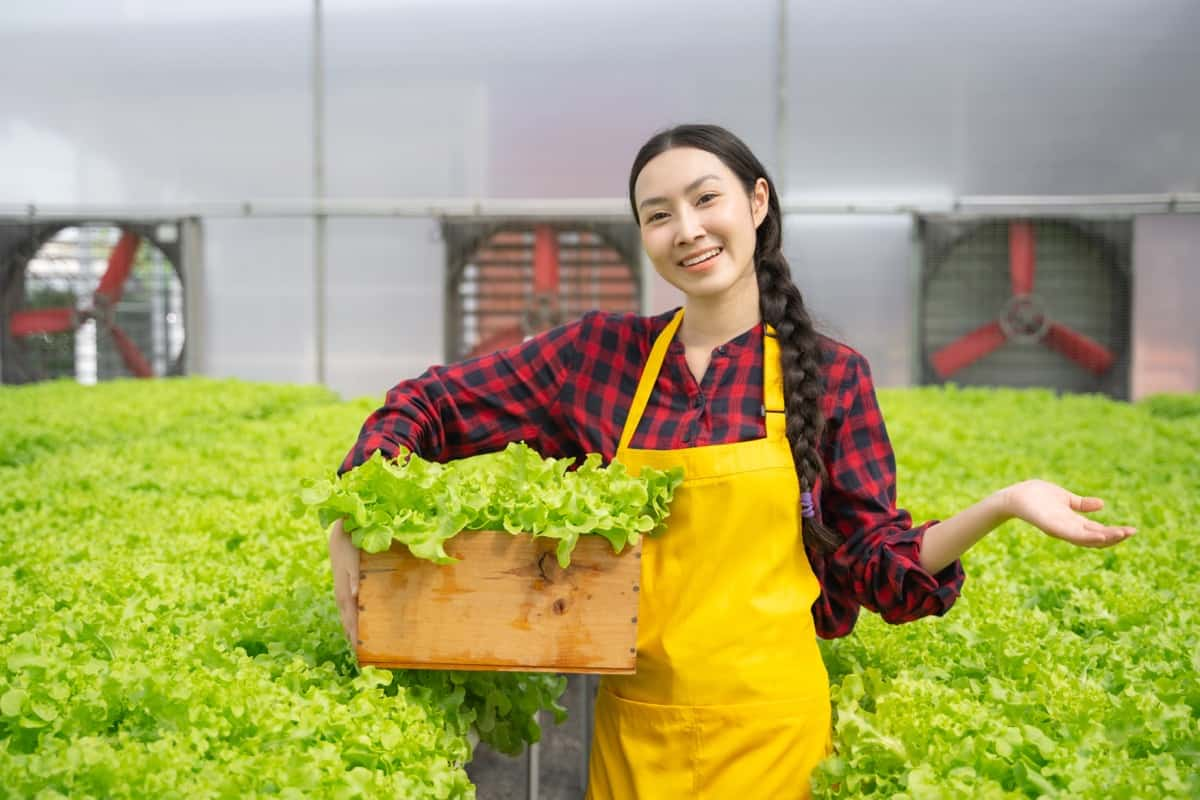
Hello friends, are you growing crops using hydroponics and not aware of coco peat for hydroponics? Well, we got you covered in this detailed article. Coconut husks, or coco peat, are an excellent alternative to soil for plant cultivation. It acts like a sponge, soaking up water while letting air reach the roots, promoting strong, healthy plant growth. Unlike regular soil, coco peat gives growers full control over the nutrients their plants absorb, making it perfect for hydroponic systems.
Using a byproduct of the coconut, which would have gone to waste otherwise, makes this growing medium eco-friendly. Using coco peat for hydroponic gardening, you may successfully grow a broad range of plants, including succulent tomatoes and verdant greens like lettuce. Roots are able to spread and absorb nutrients more easily because of their fibrous, stringy texture.
This article covers everything you need to know about using coco peat in hydroponics, from preparation to plant care. You can grow delicious, organic food without harming the environment by using coco peat as a sustainable hydroponic medium. If you want to know how to develop a garden at home, this is a simple and ecological way.
Hydroponic Growing with Coco Peat: Why It Works and How to Do It Right
Choose the Best Coco Peat for Strong Hydroponic Plants
Choosing high-quality coco peat is essential for a flourishing hydroponic garden. High-quality coco peat is free of dirt and harmful particles and has a fluffy, silky texture that evenly distributes water to plant roots. In the long run, plants can’t handle too much salt, so look for coco peat that’s low in salt.
Check the electrical conductivity (EC) and pH (which should be 5.5 to 6.5) to see if it’s okay or bad. If it’s excessively salty, it will be harmful. If you’re looking for hydroponic coco peat, the best suppliers offer it pre-washed and ready to use, saving you time and effort. These businesses are always releasing test findings to prove how safe and reliable their products are.

You can get coco peat in loose bags or blocks; the former is better for hydroponics. They are small and easy to store, but they expand substantially when watered, making them ideal for gardens big and small. Use the right coco peat if you want your plants to thrive.
| Property | Ideal Values |
|---|---|
| pH | 5.5–6.5 |
| Electrical Conductivity (EC) | Low ( |
| Texture | Fluffy, silky |
| Form | Loose bags/blocks |
Get Coco Peat Ready for Your Hydroponic System
Preparing coco peat is an effortless but essential step in hydroponic plant development promotion. For hydroponics, the initial step is to expand crushed coco peat by soaking it in water. This procedure may transform the dry block into a fluffy, usable material over several hours.
To make sure plants can properly use the coco peat, it needs to be buffered next. Calcium nitrate can be used as a buffer in coco peat to remove excess sodium and potassium that could block nutrients. After a day or two of this buffering process, any remaining coco peat is carefully rinsed away in hydroponics.
Before using coco peat in hydroponics, sterilizing it helps maintain a clean and organized environment. You can sterilize your plants by steaming them or soaking them in a gentle disinfectant to kill any harmful bacteria. If you follow these steps, your coco peat will be ready to nurture strong roots and flourishing plants.
| Preparation Steps | Duration | Purpose |
|---|---|---|
| Soaking | Several hours | Expand coco peat |
| Buffering | 1–2 days | Remove sodium/potassium |
| Sterilization | Varies | Eliminate bacteria |
Mix the Perfect Nutrient Solution for Coco Peat Hydroponics
The key to strong plant growth in hydroponics is a top-notch coco peat fertilizer solution. Due to its nutrient deficiencies, coco peat needs to be amended with various elements, including nitrogen, phosphorus, potassium, and others, according to the specific needs of your plants. For example, nitrogen is more desirable for leafy greens, whereas potassium is more important for fruiting plants.
You should check the nutrient levels periodically to prevent complications. Using an electrical conductivity (EC) meter, you can keep the coco peat hydroponics solution at its optimal level. To keep plants healthy with hydroponics, you may need to make frequent adjustments to the mix, as the amount of water that coco peat can hold impacts how well it absorbs nutrients.
A coco peat hydroponic nutrient deficit could be the cause of your plants’ sluggish growth or yellowing foliage. A simple foliar spray or adjustment to the nutrient mix will fix these issues in no time. For crops such as hydroponically produced lettuce in coco peat, a well-balanced solution ensures a bountiful harvest by keeping the leaves crisp and verdant.
| Nutrients | Plant Types | Importance |
|---|---|---|
| Nitrogen | Leafy greens | Leaf growth |
| Phosphorus | All plants | Root/energy development |
| Potassium | Fruiting plants | Fruit quality |
Keep pH and EC Balanced for Healthy Coco Peat Hydroponics
The correct pH and EC values are maintained in coco peat hydroponics to promote proper nutrient uptake by plants. While adjusting the coco peat pH for hydroponic crops, it’s best to test the medium often and aim for a range of 5.5 to 6.5. Potassium hydroxide or phosphoric acid are pH buffers that can be used to boost or lower it.
By monitoring the electrical conductivity (EC) in coco peat hydroponics, which shows the concentration of fertilizer, you may avoid adding too much salt. To eliminate extra salts from coco peat, flush it with plain water in hydroponic systems if the EC gets too high. This method keeps your coco peat hydroponic plants healthy by avoiding salt accumulation.

For crops such as hydroponically grown basil on coco peat, maintaining a stable pH and EC helps prevent nutrient lockout problems. You should check the water that leaves your system to make sure everything is in balance. By following this approach, you can keep your hydroponic garden healthy and productive.
| Parameters | Ideal Range | Adjustment Methods |
|---|---|---|
| pH | 5.5–6.5 | Potassium hydroxide/Phosphoric acid |
| EC | 1–2 mS/cm | Flush with water |
Boost Drainage and Airflow in Coco Peat Hydroponic Gardens
Proper drainage and airflow are key in hydroponic coco peat gardening to avoid root problems. When using coco peat hydroponics, it is helpful to mix it with a material that allows water to drain more rapidly, such as perlite. Coco peat and perlite make for a common hydroponic medium that is both light and prevents roots from getting too damp.
To enhance aeration in hydroponics, make sure the coco peat is not packed too firmly. By incorporating husk chips and coco peat into hydroponic soil, the texture is made looser, enabling more air to reach the roots. For plants like hydroponic cucumbers, this approach is especially helpful in establishing hydroponic roots in coco peat.
To keep coco peat hydroponics medium from becoming compacted, be careful not to overwater and to sometimes fluff it up. This keeps roots strong and lessens the chances of root rot, which can kill plants if not handled carefully, in coco peat hydroponics.
| Additives | Purpose | Benefits |
|---|---|---|
| Perlite | Improve drainage | Prevents waterlogging |
| Husk chips | Enhance aeration | Looser texture |
Compare Coco Peat to Other Materials for Hydroponic Success
Knowing the advantages and disadvantages of coco peat in comparison to other options might help you choose the best growing material. Even though coco peat holds more water, perlite drains better in hydroponics. For example, with hydroponics, you may get the most out of both worlds by mixing perlite and coco peat. This will help your plants thrive.
As an alternative to rockwool, coco peat decomposes biologically, making it a greener hydroponic substrate for plants. A mix of hydroponic coco peat and vermiculite is another option; this material can both retain water and nutrients, making it ideal for growing some crops.
When compared to earth gardening, coco peat hydroponics offers cleaner growing conditions and reduced bug populations. When compared to soil in hydroponics, coco peat provides better nutritional control and lowers the danger of insect infestation, making it an excellent choice for water-based horticulture.
| Medium | Water Retention | Drainage | Eco-Friendly |
|---|---|---|---|
| Coco Peat | High | Moderate | Yes |
| Perlite | Low | High | No |
| Rockwool | Moderate | Moderate | No |
| Vermiculite | High | Low | Yes |
Build a Simple Coco Peat Hydroponic System for New Growers
When approached with a clear plan, setting up a coco peat hydroponic system is easy, even for beginners. Give a coco peat drip system a go. Plants grown in these bags will get water that is rich in nutrients as it drops down. In the same vein as the balcony coco peat hydroponic system, this layout works wonders in cramped quarters.
To make a hydroponic pot, take a pot or tray and fill it with coco peat, making sure to leave room for the roots. Easy crops, including leafy greens, are a good choice for beginners, according to a manual for setting up a coco peat hydroponic system.
Urban gardeners have the option of using a coco peat hydroponic system, which can be set up on countertops or shelves, to cultivate plants in even the most limited of locations. Follow the maintenance instructions for coco peat hydroponic systems to keep your setup running well. This includes checking for nutrient issues and clogs.
| System Types | Space Requirement | Best Crops |
|---|---|---|
| Drip System | Small–Medium | Leafy greens |
| Balcony System | Small | Herbs, greens |
Grow Tasty Crops with Coco Peat Hydroponics
Coco peat is an excellent medium for many different types of plants due to its adaptability. For optimal tomato fruiting while hydroponically growing, utilize a potassium-rich fertilizer blend with well-prepared coco peat. Coco peat’s capacity to hold water ensures that roots remain moist all growth season long in hydroponic systems.
If you want to grow strawberries hydroponically in coco peat, you need to use shallow pots and water them frequently with nutrients because strawberry roots aren’t very deep. A nitrogen boost makes spinach’s leaves lush, but herbs like cilantro and basil thrive in compact systems cultivated in coco peat hydroponics.
Even root vegetables like radishes can be grown hydroponically using coco peat if you use loose coco peat and deep containers. Because it encourages quick seed germination and small harvests, coco peat hydroponics is also ideal for microgreens.
| Crops | Nutrient Focus | Container Types |
|---|---|---|
| Tomatoes | Potassium | Deep pots |
| Strawberries | Balanced | Shallow pots |
| Spinach | Nitrogen | Medium pots |
| Radishes | Balanced | Deep containers |
Manage Moisture and Temperature in Coco Peat Hydroponics
Keeping the coco peat hydroponics at the right temperature and humidity is essential for its health. It is important to water the coco peat system frequently to keep it moist in hydroponics because of its high water retention capacity. Using a moisture meter is an effective way to avoid overwatering coco peat hydroponics.
Another crucial factor is temperature. When growing plants in coco peat hydroponics, the ideal temperature range for the medium is 20–25°C. Use fans or shade to keep your coco peat hydroponic greenhouse from getting too hot.

In order to prevent algae growth in hydroponic coco peat systems, cover the coco peat to reflect sunlight. Algae love damp, sunny places to lurk. With these measures in place, your plants will remain happy and healthy, even when grown in a coco peat hydroponic tent.
| Parameters | Ideal Range | Control Methods |
|---|---|---|
| Moisture | Moist, not soggy | Moisture meter |
| Temperature | 20–25°C | Fans, shade |
Reuse and Dispose of Coco Peat the Smart Way
Coco peat that can be reused is eco-friendly and economical. To clean coco peat thoroughly and remove salts and old roots, it can be reused in hydroponics. To make it suitable for hydroponics, previously used coco peat should be soaked in water and rinsed several times to bring back its original freshness.
To disinfect hydroponic coco peat and eradicate bacteria, a tiny amount of hydrogen peroxide is used for increased safety. After washing, store coco peat in dry, airtight containers to avoid mold formation.
There is an eco-friendly approach to dispose of used coco peat when you’re done with hydroponics. By incorporating compost or garden soil into the mix, coco peat hydroponics can be used to enhance sustainable agriculture practices and reduce waste.
| Process | Methods | Purpose |
|---|---|---|
| Cleaning | Soak and rinse | Remove salts/roots |
| Disinfection | Hydrogen peroxide | Eliminate bacteria |
| Disposal | Compost/soil mix | Reduce waste |
Fix Common Problems in Coco Peat Hydroponics
Plant health is maintained by attending to issues with hydroponic coco peat. Fungi thrive in damp conditions, so it’s important to keep the coco peat hydroponics system well-ventilated and not water it too much to avoid fungal infections. Problems with hydroponic coco peat systems can be quickly and easily detected with regular troubleshooting.
To avoid nutrient lockout in coco peat hydroponics, it is important to regularly check the pH and EC levels. If these levels are incorrect, plants will not be able to receive nutrients. By flushing coco peat with ordinary water, excess salts from hydroponic systems can be removed. To keep pests out of coco peat hydroponic systems, use neem oil or sticky traps.
In hydroponics, root rot can’t happen without good drainage and light coco peat. By following these steps, your garden will thrive in hydroponic systems that use coco peat, such as the coco peat NFT system and the coco peat vertical farming system.
| Issues | Because | Solutions |
|---|---|---|
| Fungal Infections | Excess moisture | Ventilation |
| Nutrient Lockout | Incorrect pH/EC | Flush with water |
| Pests | Insect presence | Neem oil/sticky traps |
| Root Rot | Poor drainage | Light coco peat |
Scale Up with Coco Peat for Big Hydroponic Farms
Coco peat is a reliable plant that produces a large number of plants, which is perfect for large farms. Commercial lettuce and other crops requiring uniform plant growth respond well to coco peat hydroponics. Consistent conditions are maintained in a coco peat hydroponic grow room setup, allowing for big harvests.
In coco peat hydroponics, for example, you should use specific fertilizer mixes and check on your plants often if you’re growing chili plants or medicinal herbs. Maximizing yields in coco peat hydroponics requires finding the sweet spot between water, nutrients, and light.
One example of a system that does double duty is the coco peat hydroponic system, which may be used in both urban farming and school gardens. The use of coco peat hydroponic grow bags streamlines planting and maintenance for large-scale operations.
| Crops | System Types | Benefits |
|---|---|---|
| Lettuce | Grow bags | Uniform growth |
| Chili Plants | Grow room | High yields |
| Medicinal Herbs | Grow bags | Easy maintenance |
Use Coco Peat in Special Hydroponic Systems
Because coco peat works in so many different hydroponic setups, the options are practically endless. In a hydroponic NFT system, the coco peat acts as a support for the roots as nutrient water flows by. Hydroponic leafy greens grown with coco peat benefit greatly from this since it maintains a wet and nourishing environment for the roots.
Using coco peat for hydroponic seed starting is easy since the medium holds moisture effectively for sprouting. Little discs of coco peat, known as pellets, are perfect for hydroponically starting seeds or seedlings because they swell when water is added.

A coco peat hydroponic system can grow food in any location, even in cramped quarters or inside a greenhouse, thanks to the adaptability of coco peat. These systems make it simple and effortless to cultivate your own herbs and greens in the comfort of your own home.
| System Types | Use Case | Advantages |
|---|---|---|
| NFT System | Leafy greens | Wet environment |
| Seed Starting | Seedlings | Moisture retention |
Grow Organic and Green with Coco Peat Hydroponics
Coco peat is ideal for sustainable gardening. Organic hydroponic farming can grow clean, chemical-free food by utilizing coco peat and organic nutrient mixes. The natural composition of the medium supports healthy plants without the need for additional additives.
City producers can grow their fresh food in cramped spaces like rooftops and balconies using the coco peat hydroponic method. Coco peat hydroponics makes use of two strategies to reduce waste: reusing the medium and composting the leftovers.
Vegetables and herbs, grown using organic methods such as coco peat hydroponics, flourish and produce healthy, tasty food. Using coco peat in this way encourages a more eco-conscious way of living while also keeping your garden productive.
| Practices | Benefits | Applications |
|---|---|---|
| Organic Nutrients | Chemical-free | Healthy plants |
| Reuse/Composting | Waste reduction | Sustainable farming |
Troubleshoot and Maintain Coco Peat Hydroponic Systems
To ensure the optimal performance of your coco peat hydroponic system, routine maintenance is essential. Finding and fixing problems like slow growth or yellowing leaves is an important part of troubleshooting a coco peat hydroponic system. Your plants’ vitality and health will be preserved in this way.

To avoid nutrient lockout in coco peat hydroponics, check pH and EC levels often and make adjustments as needed. Flushing coco peat in hydroponic systems removes salts that could build up and harm plants. Coco peat hydroponics benefits from the use of all-natural pesticide sprays.
Regular maintenance for hydroponic coco peat systems should include cleaning drip lines, checking water flow, and fluffing the coco peat to prevent compaction. No matter how big or little your system is, following these steps will ensure that it runs smoothly and produces high-quality crops.
| Maintenance Tasks | Frequency | Purpose |
|---|---|---|
| Check pH/EC | Weekly | Prevent lockout |
| Flush System | As needed | Remove salts |
| Clean Drip Lines | Monthly | Ensure water flow |
Wrap Up
Coco peat revolutionizes hydroponic farming by providing a straightforward and environmentally conscious method for growing organic produce. Its ability to retain water, allow roots to breathe, and support a wide variety of plant species makes it a valuable option for both novices and experts. Coco peat is a sustainable hydroponic media that is both environmentally friendly and versatile, making it ideal for hydroponic cultivation.
This comprehensive guide covers every aspect, from choosing the best coco peat for hydroponic farming to assembling systems like the beginner’s coco peat hydroponic system. When using coco peat hydroponics, it is important to take precautions such as buffering the coco peat with calcium nitrate and maintaining a wet environment to grow nutritious crops like hydroponic strawberries or lettuce.
These suggestions can help you design a productive and eco-friendly garden. Both home gardens and commercial hydroponic systems can utilize coco peat as an easy, fun, and productive growing medium. Begin your hydroponic journey today and relish the delight of fresh, homegrown food!





